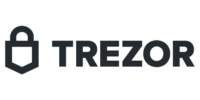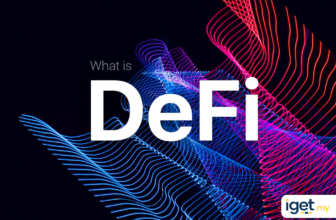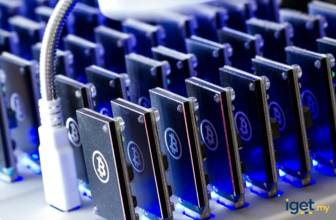ntroduction
The blockchain is one of the most important technological innovations in recent history. It's also the technology that makes cryptocurrencies like Bitcoin work. In this article, we'll explain what a blockchain is and how it works, as well as its potential uses outside of just cryptocurrency.
Blockchain was invented by Satoshi Nakamoto to create Bitcoin in 2008.
The blockchain was invented in 2008 by Satoshi Nakamoto to create Bitcoin. In this regard, before we get into the details of what exactly a blockchain is, let’s talk about why it was created and how it can be used.
According to Satoshi Nakamoto (the mysterious creator of Bitcoin), “[Bitcoin] is an implementation of Wei Dai's b-money proposal on Cypherpunks […] Nick Szabo also independently invented a similar protocol.” A year later, he published a paper titled “Bitcoin: A Peer-to-Peer Electronic Cash System.” It was here that he explained his idea:
In a blockchain, transactions are added in blocks that are linked and secured by cryptography.
A blockchain is a chain of blocks, each block containing a hash value that is unique to that block and links back to the previous block. The hashing function creates an unalterable fingerprint for each transaction, which cannot be changed. In this way, each subsequent transaction forms a permanent record of all transactions previously made on the network. This makes it impossible for anyone to go back and change or tamper with earlier transactions without being detected—which makes blockchain technology extremely secure.
Each block has a hash value that is unique to that block and links back to the previous block.
Each block has a hash value that is unique to that block and links back to the previous block. A hash function is used to create a hash value based on information stored in the block. For example, if you were to use your email address as information, then each time you changed your email address it would result in a different hash value. This makes it nearly impossible for someone who wants to change data in one block (or set of blocks) from doing so because they would need to change all subsequent hashes as well – which would require changing all subsequent blocks too!
Blockchain is a distributed database or ledger that schedules transactions in chronological order and is shared by all nodes participating in the system.
Blockchain is a distributed database or ledger that schedules transactions in chronological order and is shared by all nodes participating in the system. Each block contains a hash value that points to the previous block. This means that each block depends on the one before it, so if you change one block, all subsequent blocks will also be changed—making it impossible to alter any data without changing all subsequent blocks as well. Blockchain technology can thus be used for proof of existence and authenticity, but not ownership.
Blockchain technology was originally developed for Bitcoin, but has since been adopted by many other cryptocurrencies such as Litecoin and Ethereum
Trust Wallet
Trezor
Nodes are devices that maintain their own copies of the blockchain.
Nodes are devices that maintain their own copies of the blockchain. A node is any computer that is connected to the blockchain network and is able to interact with other nodes using the protocol for exchanging information. Nodes receive a copy of the blockchain when they join the network, and they may also be required to store some or all of it locally on its hard drive.
Each node must verify every transaction before adding it to its local copy of the blockchain in order to prevent fraud or tampering; this process is called mining, which we'll discuss later in this article.
Nodes use a peer-to-peer network to verify new blocks.
Nodes use a peer-to-peer network to verify new blocks.
Once a block is created, it's sent out to all nodes in the network. The first node that receives the block starts checking it for validity. First, it verifies that all transactions are valid and are not double spends of cryptocurrency. Then, it verifies whether or not all transactions were signed off by the correct signatures (using a cryptographic hash function). Finally, it determines if there is consensus about which copy of the blockchain is correct—that is whether or not every other node agrees with their version of events and versions of their own history at certain points in time.
If a node's copy of the blockchain differs from the nodes it communicates with, the nodes will reach consensus about which copy is correct.
In order to reach consensus on the blockchain, each node must have its own copy of the blockchain and be able to use its local copy to verify transactions. If a node's copy differs from the nodes it communicates with, then the nodes will reach consensus about which copy is correct.
However, if two computers are mining blocks at different rates or otherwise have divergent data sets (for example if one computer received an invalid transaction), then there are no rules about what happens next.
This can lead to situations where multiple versions of the same blockchain exist: a phenomenon known as “forking” within the cryptocurrency community.
Luno
Every node in the system has a complete record of all transactions since the inception of the blockchain, so there is no need for any third party to verify those transactions.
Since all transactions are recorded on a ledger that is publicly accessible and distributed among nodes, there is no need for any third party to verify those transactions. This makes it very good for transferring many things like cryptocurrency or ownership rights, but it can be used to track just about anything because all parties can see every transaction.
The transparency of blockchain makes it very good for transferring many things like cryptocurrency or ownership rights, but it can be used to track just about anything because all parties can see every transaction.
The transparency of blockchain makes it very good for transferring many things like cryptocurrency or ownership rights, but it can be used to track just about anything because all parties can see every transaction.
One of the key features of blockchain technology is that it's transparent. This means that all parties can see every transaction on a blockchain, but it also means that even without mining or cryptocurrency (which we'll talk about later), you can use a blockchain to track ownership rights and other assets.
Ultimately, this makes blockchain incredibly useful for transferring many things like cryptocurrency or ownership rights, but it can also be used to track just about anything because all parties can see every transaction.
Before cryptocurrencies came along, no one thought of using this technology for anything else
Before cryptocurrencies came along, no one thought of using this technology for anything else. The term “blockchain” didn't exist until Satoshi Nakamoto (the unknown inventor of Bitcoin) used it to describe the ledger that tracks all bitcoin transactions. Since then, people have developed other ways to use blockchain technology beyond crypto-currencies.
Conclusion
There are many benefits to using blockchain technology, including security and transparency. The technology has been around for a long time, but it was only recently that people started to realize its potential. It's still too early to know what impact it will have on our daily lives, but we're already seeing plenty of examples of how it can be used in innovative ways by entrepreneurs and businesses alike.











